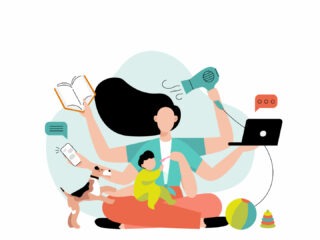If you read the trades or are among the dwindling number of late-night talk show viewers, you’re aware that members of the Writers Guild of America (WGA) are currently on strike. Their demands include higher pay and more equitable royalties in the age of streaming.
An additional concern is the potential for generative AI to be used to write scripts and complete production tasks. Writers fear studios could be motivated to eventually cut them out of the creative process altogether. A recent screenwriting experiment suggests writers don’t have much to worry about in the near future. But the industry has already embraced AI in other areas, most notably special effects, even when the result is subpar. (Studio execs care more about money than artistic integrity. Who knew?)
But it made me ponder, “When are humans crucial?” (Check out an earlier pondering on generative AI here.) For instance, we (humans) already do a generally lousy job of creating effective ads for the Super Bowl. This AI-generated beer commercial offers a glimpse into a replacement. Sure, it’s terrible, but you’re probably going to ignore it anyway as you grab more snacks. And would anyone notice or complain if generative AI wrote the next installment of the Fast and Furious franchise? Has it already?
In storytelling—for the purposes of this discussion, let’s define it more broadly as the process of communicating ideas to a specific audience with the goal of eliciting a certain reaction—humans are essential. That has more to do with all of the elements of storytelling that require human judgment. The best stories (books, TV, movies, music) reflect the times in which they were created, offer a unique perspective, and are able to make an emotional connection with an audience, among other attributes.
One of my favorite TV shows of the past few years is South Side. In its three seasons, it established a unique tone by highlighting and subverting common perceptions of Chicago through the lens of characters you feel like you know. Part of what made the show so good was the range of influences and elements that were combined in a new way. Cocreator Diallo Riddle said, “Our show ‘South Side’ [sic] wouldn’t be the show it is without the active, healthy collaboration between the brilliant human beings who sat in our writers room.”
But what about business communications and content marketing? We’re not asked to birth The Great Gatsby for clients, and some components of a campaign could be perceived as more transactional. Couldn’t generative AI take care of those pieces?
The most effective integrated content campaigns adhere to best practices while being tailored to the client’s needs. Their real value comes from translating strategic elements, including objectives and target audience, into a campaign featuring a portfolio of content that elevates ideas and insights. The early stages—discussions with the client, market research and analysis, messaging, campaign development—are where the hard work and necessary collaboration take place.
It’s only once we nail down those pieces that we can move on to creating the content—from videos to interactives to reports—to engage an audience. At that point, we have become immersed in the strategy, messaging, and all related factors, which enables our team to efficiently tailor these elements to the right formats for selected channels. That knowledge can’t be easily translated to machines to create specific, quality content that engages people.
Of course, technology has been informing strategy and campaign planning for decades, and generative AI could be helpful on some transactional, repeatable tasks. In content marketing, such tasks could include writing the first draft of emails or newsletter copy tailored to specific customer segments. Is the human element critical in writing an email that 95 percent of recipients might delete without opening it? Probably not. But a human could likely more effectively capture a brand’s tone and nuances, such as a sense of humor—and that can happen after generative AI gives it the old college try.
During times of change, it’s important to isolate what matters and clearly articulate why. I’m glad the WGA strike is bringing this issue to the forefront. A unique perspective, collaboration, creativity, and human connection are hallmarks for effective storytelling. As important, those of us in fields that could be affected by generative AI have a responsibility to educate ourselves and others on how the human touch can create a competitive advantage.




Leave a Reply
You must be logged in to post a comment.